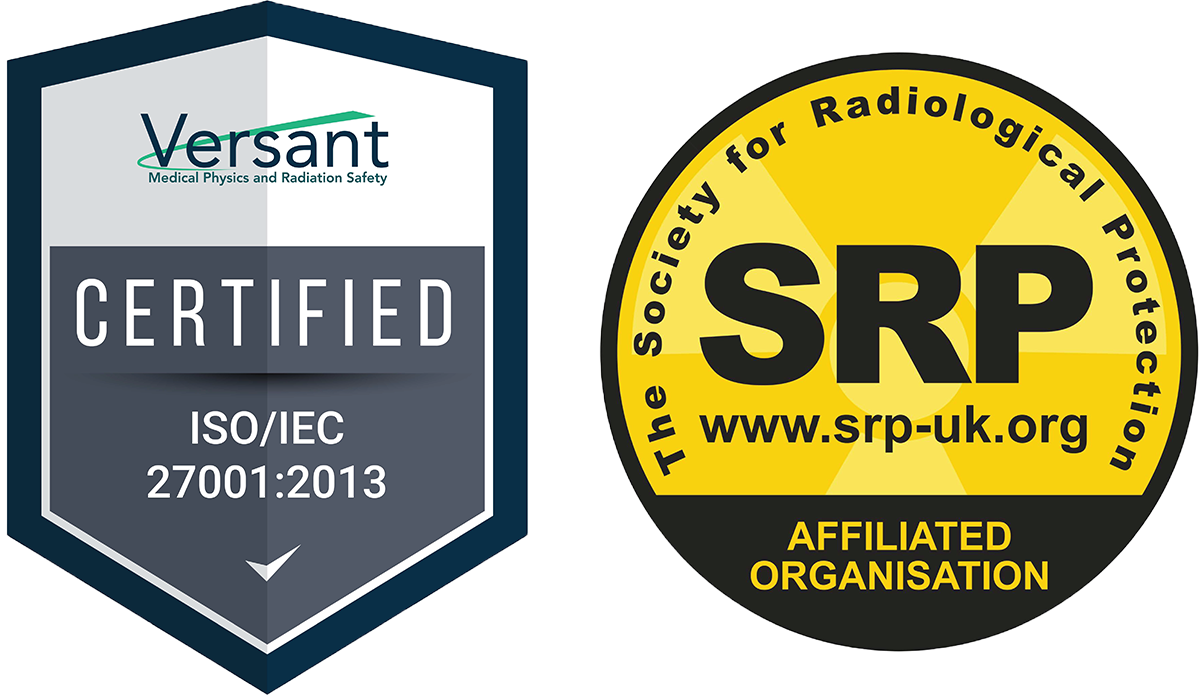The use of radiation in medicine via radiology, nuclear medicine, and radiotherapy helps detect and treat a variety of medical conditions in humans. It is a commonly used practice, with over 10 million procedures performed in the United States each year and thousands of lives saved as a result.
When radiation is administered improperly it is classified as a radiation medical event. A radiation medical event can occur when certain forms of radioactive sources are applied differently from what was intended or prescribed.
Although a radiation medical event does not necessarily result in harm to the patient, it does indicate that there is a potential problem in the medical facility’s use of radioactive sources (materials or equipment). An investigation into the event is required as soon as a medical event is suspected, typically by a clinical health physicist, as well as a written report documenting their findings.
What is a Radiation Medical Event?
The NRC defines an incident as a radiation medical event when (10 CFR 35.3045) the administration of byproduct material or radiation from byproduct material for, except permanent implant brachytherapy, results in—
- A dose that differs from the prescribed dose or dose that would have resulted from the prescribed dosage by more than 0.05 Sv (5 rem) effective dose equivalent, 0.5 Sv (50 rem) to an organ or tissue, or 0.5 Sv (50 rem) shallow dose equivalent to the skin;
- The total dose delivered differs from the prescribed dose by 20 percent or more; or
- The total dosage delivered differs from the prescribed dosage by 20 percent or more or falls outside the prescribed dosage range; or
- The fractionated dose delivered differs from the prescribed dose for a single fraction, by 50 percent or more.
- A dose that exceeds 0.05 Sv (5 rem) effective dose equivalent, 0.5 Sv (50 rem) to an organ or tissue, or 0.5 Sv (50 rem) shallow dose equivalent to the skin from any of the following—
- An administration of a wrong radioactive drug containing byproduct material or the wrong radionuclide for a brachytherapy procedure;
- An administration of a radioactive drug containing byproduct material by the wrong route of administration;
- An administration of a dose or dosage to the wrong individual or human research subject;
- An administration of a dose or dosage delivered by the wrong mode of treatment; or
- A leaking sealed source.
- A dose to the skin or an organ or tissue other than the treatment site that exceeds by:
- 0.5 Sv (50 rem) or more the expected dose to that site from the procedure if the administration had been given in accordance with the written directive prepared or revised before administration; and
- 50 percent or more the expected dose to that site from the procedure if the administration had been given in accordance with the written directive prepared or revised before administration.
- For permanent implant brachytherapy, the administration of byproduct material or radiation from byproduct material (excluding sources that were implanted in the correct site but migrated outside the treatment site) that results in—
- The total source strength administered differing by 20 percent or more from the total source strength documented in the post-implantation portion of the written directive;
- The total source strength administered outside of the treatment site exceeding 20 percent of the total source strength documented in the post-implantation portion of the written directive; or
- An administration that includes any of the following:
- The wrong radionuclide;
- The wrong individual or human research subject;
- Sealed source(s) implanted directly into a location discontiguous from the treatment site, as documented in the post-implantation portion of the written directive; or
- A leaking sealed source resulting in a dose that exceeds 0.5 Sv (50 rem) to an organ or tissue.
- Intervention of a patient or human research subject in which the administration of byproduct material or radiation from byproduct material results or will result in unintended permanent functional damage to an organ or a physiological system, as determined by a physician.
Radiation Medical Event Reports
Any of these medical events must be reported by telephone to the appropriate regulatory agency (i.e., Nuclear Regulatory Commission or Agreement State agency) no later than the next calendar day after discovery. A detailed written report, as described in 10 CFR 35.3045, must be submitted within 15 days after the discovery of the event. Such reports do not include information that could identify the affected patient as these reports are made available to the public.

While medical events are accidental, it should be noted that a radiation medical event and a radiation accident are not the same things. Radiation accidents are defined as an event that “has led to significant consequences to people, the environment, or the facility,” such as a nuclear reactor core melt.
The purpose of medical event reporting is to initiate a process that will: (i) determine the root cause(s) and contributing cause(s); (ii) implement immediate corrective actions as may be necessary; (iii) identify preventative actions necessary to prevent a reoccurrence, and (iv) ensure appropriate notification of the patient and referring physician has occurred. Additionally, the event may trigger the regulatory agency to alert other licensees to a potential problem that should be addressed.
A medical event may indicate that there are problems within a facility that needs to be addressed. Communication problems, improper labeling, lack of training, and basic human error are all possible explanations.
An investigation into the technical aspects of the procedure, overall quality assurance practices (i.e., audits), and treatment delivery are required. A physician may also need to provide a separate analysis of potential injury or inadequate treatment to determine if any harm came to the patient because of the medical event.
Other medical event reports include:
- Report and notification of a dose to an embryo/fetus or a nursing child (10 CFR 35.3047) This includes an unintended dose to an embryo/fetus or a nursing child greater than 5 rem resulting from administration of a byproduct material to the mother/breast feeding individual. No report is required if the dose to the embryo/fetus was approved by the authorized user; or
- Report of a leaking sealed source (10 CFR 35.3067). The written report should include the model number, serial number, the radionuclide and its estimated activity, the date and results of the leak test, and the action taken.
How Are Patients Notified of a Medical Event?
NRC regulations state that it is the licensee’s responsibility to notify the exposed individual and their referring physician of the medical event within 24 hours of its discovery. If the notice is made verbally, the patient can request a written notification as well as access to the full report.
Severe events are rare, and harm is unlikely to befall a patient involved with a radiation medical event. However, it is important that the individual receive the appropriate medical care as soon as possible if needed.

Radiation Medical Events Can Be Prevented
With proper continuing education training, regular machine and technology upkeep, a working standard operating procedure, and efficient reporting systems, radiation medical events can be prevented.
It also helps to have a third-party consultant who can identify potential problems in your radiation safety program.
The team at Versant Physics is trained and equipped to help radiology departments and medical facilities prevent radiation medical events. Our board-certified medical and health physicists can help by performing acceptance testing of radiation-producing machines, conducting regulatory compliance audits, performing shielding evaluation and design calculations, and leading training opportunities.
Contact our regulatory team to discuss your radiation safety program needs.
Further Reading:
- https://www.astro.org/News-and-Publications/What-is-Happening-in-Washington/2018/ASTRO-supported-NRC-Final-Rule-for-definition-of-m
- https://www.nrc.gov/reading-rm/doc-collections/fact-sheets/risks-assoc-medical-events.html
- https://www.crcpd.org/page/RadMedicalEvents
- https://www.iaea.org/resources/rpop/health-professionals/nuclear-medicine/diagnostic-nuclear-medicine/misadministrations


